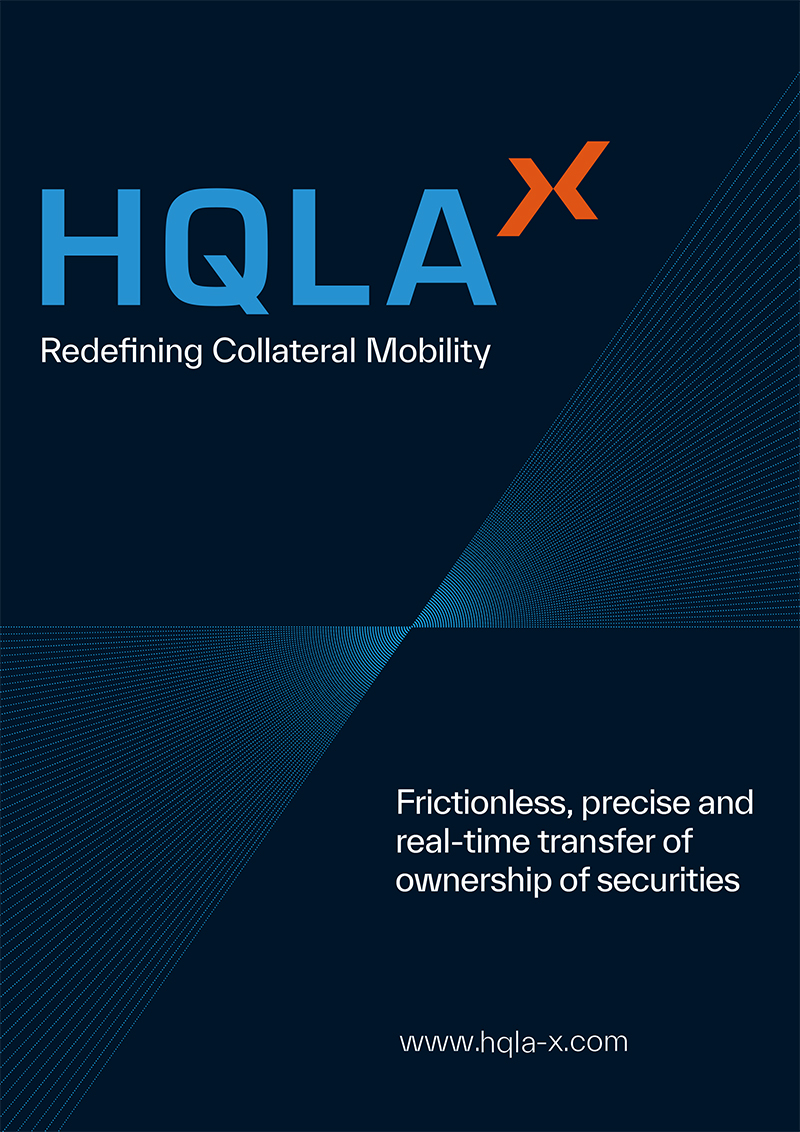All things Asia
23 July 2019
Mark Snowdon, head of capital markets, Asia Pacific at Northern Trust, discusses the importance of securities lending in Asia and what lies ahead in this space
 Image: Shutterstock
Image: Shutterstock
Why is securities lending important in Asia?
The global challenges we see emerging across the broader asset management community are very much applicable to asset managers in Asia Pacific. Low-rate low-yield environment organisations such as asset managers and sovereign wealth funds view securities lending as an integrated investment vehicle, which complements their suite of front-office activities. The drive to enhance performance amidst rising cost pressures, although a challenge, is also helping to grow momentum in the securities lending industry for both asset managers and asset owners. Lending is increasingly used to help achieve higher levels of risk-managed performance, with asset managers working closely with agent lenders to build bespoke lending programmes that optimise returns within their prescribed levels of risk tolerance. These programmes are then adjusted and broadened over time, in collaboration with the asset manager’s agent lender, to promote new ideas and revenue streams that sit within the manager’s compensated risk profile.
Such broadening initiatives include expanding collateral profiles or reviewing alternate trading structures such as ‘pledged collateral’ in order to drive increased returns. Other trends are the growth of alternative routes to market such as non-traditional borrowers which agent lenders are bringing to asset managers. This includes direct access to the hedge fund community by secure and automated channels, which generates additional returns in an environment where risk is managed and controlled by the bank acting as the agent lender. These types of initiatives are markedly different from the past, where securities lending was deployed almost solely to offset costs, and it is a trend that we predict will continue.
While some asset managers are working closely with their boards to engage in securities lending for the first time, others are leading the way in using security lending as a vehicle to meet the needs of other functions with their businesses. Through concepts such as cash collateral self-investment, agency repo, collateral optimisation and peer-to-peer lending, another interesting theme is the way in which securities lending can support the cash management and liquidity needs of the treasury function. On a market-wide basis, advancing regulation and its impact on capital and borrower balance sheets, is leading to the possibility of widely used securities lending central counterparty clearing platforms.
Asia remains an important region for securities lending with good prospects for growth and a range of compelling opportunities for asset managers. As the low-return and low-rate environment headwinds continue, the need to enhance performance is critical, and this continues to encourage Asian asset managers and sovereign wealth funds to seek risk-managed returns from both traditional and more advanced securities lending programmes.
What is the significance of regulatory and governance developments for securities lending?
History tells us that regulation will continue to be at the top of everyone’s agenda for the foreseeable future. Despite Asia’s regulatory fragmentation, it is not unreasonable to expect the gradual convergence of securities lending rules across jurisdictions over time. While different regulators have different priorities due to economies developing at various paces, there appears to be a willingness to make changes to securities lending regulation and rules that align with a fairly standardised model. The broader regulatory trends across the region seem to recognise the benefits to participants in pursuing greater harmonisation, and we hope that regulators take this into account, albeit at a pace which complements the development of capital markets on a country-by-country basis.
More specifically, developments such as Securities Financing Transactions Regulation (SFTR) and resolution stay protocols have provided certainty around details and implementation timeframes globally. As these regulations are implemented, they will allow the industry to be better positioned for a flexible and more efficient future for all participants.
SFTR will provide an opportunity to bring the industry closer to a single model and will ensure that industry participants start standardising around securities lending data. The industry continues to work well with both lending agents and borrowers to ensure that trade lifecycles are managed across the various systems in place today, and this standardisation should make the industry more efficient. Fewer exceptions and trade processing delays will improve trading, and should break down barriers to entry, especially for technology firms to bring benefits to the industry. Another benefit would be the improvements in timeliness of data provision to asset managers who led their portfolios.
Changes to the calculation for risk-weighted assets have been approved by the Basel committee and will continue to impact the industry globally. Reducing the regulatory costs of certain securities lending transactions is likely to be the catalyst for increased activity and we need to work with regulators, clients and other industry participants to ensure that regulations are well-understood, and the benefits are delivered.
How are advances in technology transforming the industry in the region?
Advances in technology are transforming financial markets globally, and the Asian securities lending industry is no different. Technology is an opportunity to enhance the entire lifecycle, from trading strategies through to operational efficiencies. The market is focused on investing in areas that will unlock value for clients such as trading technology, which can help deliver greater automation of the trading function. This henceforth allows trading teams to focus on those opportunities that derive the most value for clients.
New technologies in the machine learning space, robotics, artificial intelligence (AI) and data analysis are all areas of focus for the industry. The sourcing, enrichment and delivery of data will be a key benefit to lending agents and their clients, allowing asset managers to optimise returns further. We expect the practical application of these technologies to drive competitive advantage for performance, efficiency and better client experiences.
Building out technology to support the adoption of new models such as ‘pledged collateral’ and central counterparties will continue, allowing the industry to gain traction in providing trade matching and balance sheet efficiencies. As borrowers look for different trade structures to meet their specific requirements and capital positions, investment in alternative routes to market remain important. Areas of development around indemnification flexibility, directed trades, lending to hedge funds and a broadening of securities financing services will all require commitment to investment and resourcing to ensure clients benefit from progress.
We will see increased use of automated pricing mechanisms, which will enable lenders to more accurately predict and determine appropriate pricing levels for “specials”. This will enhance transparency and unlock value for clients through the automation of the trading function, which in turn frees resources to seek maximum trading value.
The potential for blockchain technology to drive both small-scale benefits for lenders and borrowers, and major industry-wide improvements and opportunities will become more widespread. Through our experience and expertise in deploying blockchain technology for private equity markets, we believe distributed ledger technology can improve the transparency and efficiency of the securities lending market.
This will provide potential opportunities to achieve industry cost efficiencies across the value chain and as confidence grows in the technology sector, future opportunities are likely to develop in a wide range of areas.
The global challenges we see emerging across the broader asset management community are very much applicable to asset managers in Asia Pacific. Low-rate low-yield environment organisations such as asset managers and sovereign wealth funds view securities lending as an integrated investment vehicle, which complements their suite of front-office activities. The drive to enhance performance amidst rising cost pressures, although a challenge, is also helping to grow momentum in the securities lending industry for both asset managers and asset owners. Lending is increasingly used to help achieve higher levels of risk-managed performance, with asset managers working closely with agent lenders to build bespoke lending programmes that optimise returns within their prescribed levels of risk tolerance. These programmes are then adjusted and broadened over time, in collaboration with the asset manager’s agent lender, to promote new ideas and revenue streams that sit within the manager’s compensated risk profile.
Such broadening initiatives include expanding collateral profiles or reviewing alternate trading structures such as ‘pledged collateral’ in order to drive increased returns. Other trends are the growth of alternative routes to market such as non-traditional borrowers which agent lenders are bringing to asset managers. This includes direct access to the hedge fund community by secure and automated channels, which generates additional returns in an environment where risk is managed and controlled by the bank acting as the agent lender. These types of initiatives are markedly different from the past, where securities lending was deployed almost solely to offset costs, and it is a trend that we predict will continue.
While some asset managers are working closely with their boards to engage in securities lending for the first time, others are leading the way in using security lending as a vehicle to meet the needs of other functions with their businesses. Through concepts such as cash collateral self-investment, agency repo, collateral optimisation and peer-to-peer lending, another interesting theme is the way in which securities lending can support the cash management and liquidity needs of the treasury function. On a market-wide basis, advancing regulation and its impact on capital and borrower balance sheets, is leading to the possibility of widely used securities lending central counterparty clearing platforms.
Asia remains an important region for securities lending with good prospects for growth and a range of compelling opportunities for asset managers. As the low-return and low-rate environment headwinds continue, the need to enhance performance is critical, and this continues to encourage Asian asset managers and sovereign wealth funds to seek risk-managed returns from both traditional and more advanced securities lending programmes.
What is the significance of regulatory and governance developments for securities lending?
History tells us that regulation will continue to be at the top of everyone’s agenda for the foreseeable future. Despite Asia’s regulatory fragmentation, it is not unreasonable to expect the gradual convergence of securities lending rules across jurisdictions over time. While different regulators have different priorities due to economies developing at various paces, there appears to be a willingness to make changes to securities lending regulation and rules that align with a fairly standardised model. The broader regulatory trends across the region seem to recognise the benefits to participants in pursuing greater harmonisation, and we hope that regulators take this into account, albeit at a pace which complements the development of capital markets on a country-by-country basis.
More specifically, developments such as Securities Financing Transactions Regulation (SFTR) and resolution stay protocols have provided certainty around details and implementation timeframes globally. As these regulations are implemented, they will allow the industry to be better positioned for a flexible and more efficient future for all participants.
SFTR will provide an opportunity to bring the industry closer to a single model and will ensure that industry participants start standardising around securities lending data. The industry continues to work well with both lending agents and borrowers to ensure that trade lifecycles are managed across the various systems in place today, and this standardisation should make the industry more efficient. Fewer exceptions and trade processing delays will improve trading, and should break down barriers to entry, especially for technology firms to bring benefits to the industry. Another benefit would be the improvements in timeliness of data provision to asset managers who led their portfolios.
Changes to the calculation for risk-weighted assets have been approved by the Basel committee and will continue to impact the industry globally. Reducing the regulatory costs of certain securities lending transactions is likely to be the catalyst for increased activity and we need to work with regulators, clients and other industry participants to ensure that regulations are well-understood, and the benefits are delivered.
How are advances in technology transforming the industry in the region?
Advances in technology are transforming financial markets globally, and the Asian securities lending industry is no different. Technology is an opportunity to enhance the entire lifecycle, from trading strategies through to operational efficiencies. The market is focused on investing in areas that will unlock value for clients such as trading technology, which can help deliver greater automation of the trading function. This henceforth allows trading teams to focus on those opportunities that derive the most value for clients.
New technologies in the machine learning space, robotics, artificial intelligence (AI) and data analysis are all areas of focus for the industry. The sourcing, enrichment and delivery of data will be a key benefit to lending agents and their clients, allowing asset managers to optimise returns further. We expect the practical application of these technologies to drive competitive advantage for performance, efficiency and better client experiences.
Building out technology to support the adoption of new models such as ‘pledged collateral’ and central counterparties will continue, allowing the industry to gain traction in providing trade matching and balance sheet efficiencies. As borrowers look for different trade structures to meet their specific requirements and capital positions, investment in alternative routes to market remain important. Areas of development around indemnification flexibility, directed trades, lending to hedge funds and a broadening of securities financing services will all require commitment to investment and resourcing to ensure clients benefit from progress.
We will see increased use of automated pricing mechanisms, which will enable lenders to more accurately predict and determine appropriate pricing levels for “specials”. This will enhance transparency and unlock value for clients through the automation of the trading function, which in turn frees resources to seek maximum trading value.
The potential for blockchain technology to drive both small-scale benefits for lenders and borrowers, and major industry-wide improvements and opportunities will become more widespread. Through our experience and expertise in deploying blockchain technology for private equity markets, we believe distributed ledger technology can improve the transparency and efficiency of the securities lending market.
This will provide potential opportunities to achieve industry cost efficiencies across the value chain and as confidence grows in the technology sector, future opportunities are likely to develop in a wide range of areas.
NO FEE, NO RISK
100% ON RETURNS If you invest in only one securities finance news source this year, make sure it is your free subscription to Securities Finance Times
100% ON RETURNS If you invest in only one securities finance news source this year, make sure it is your free subscription to Securities Finance Times



